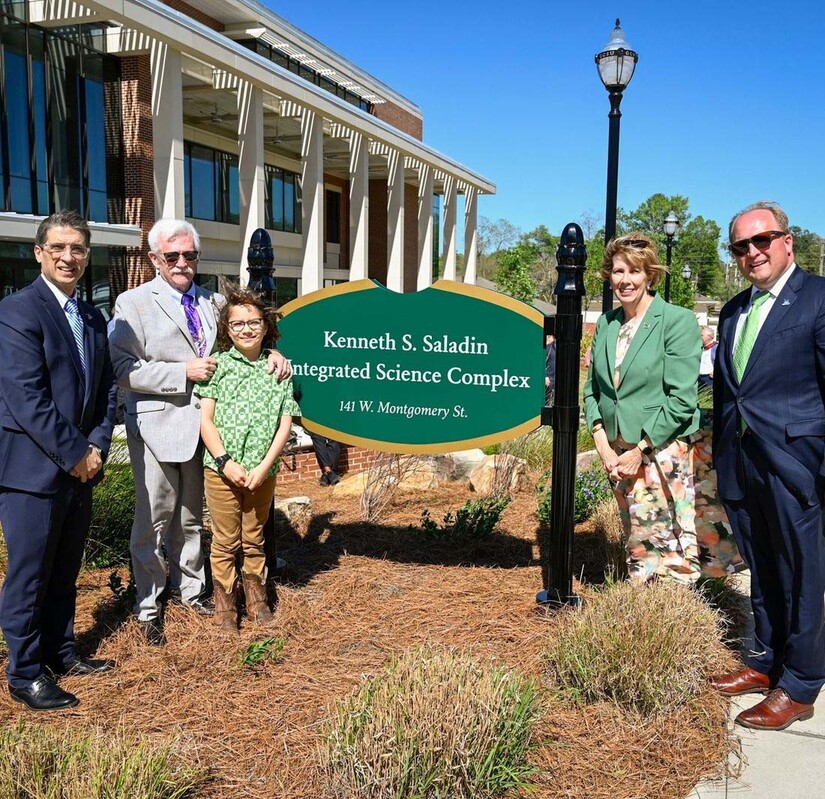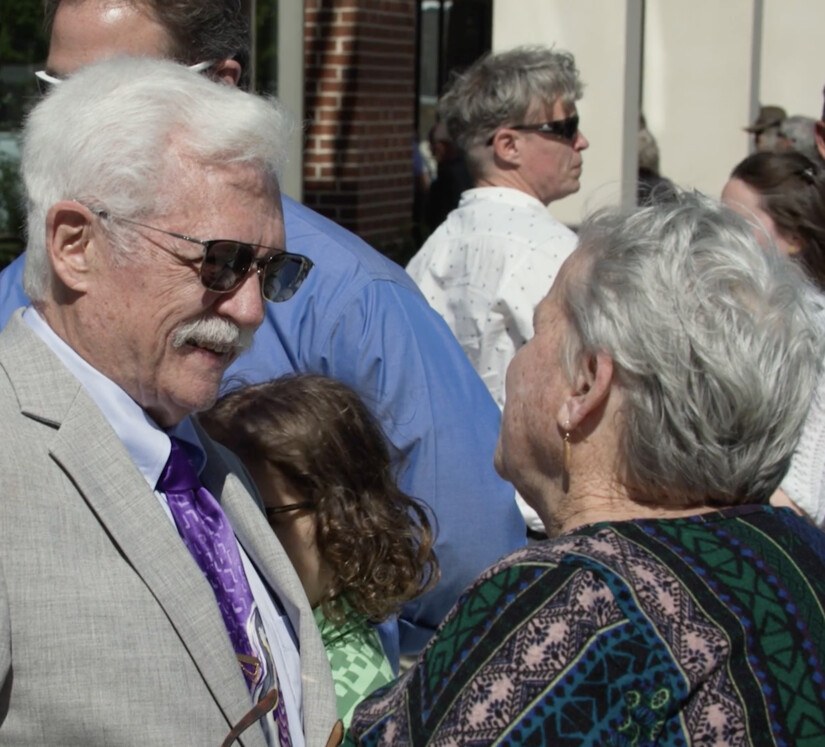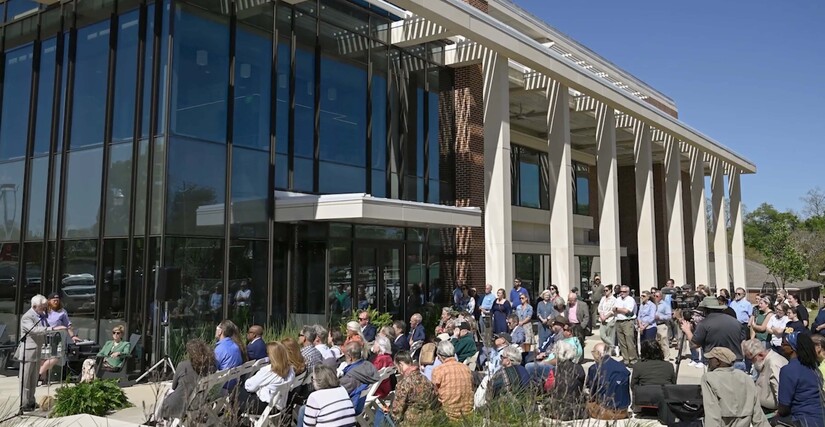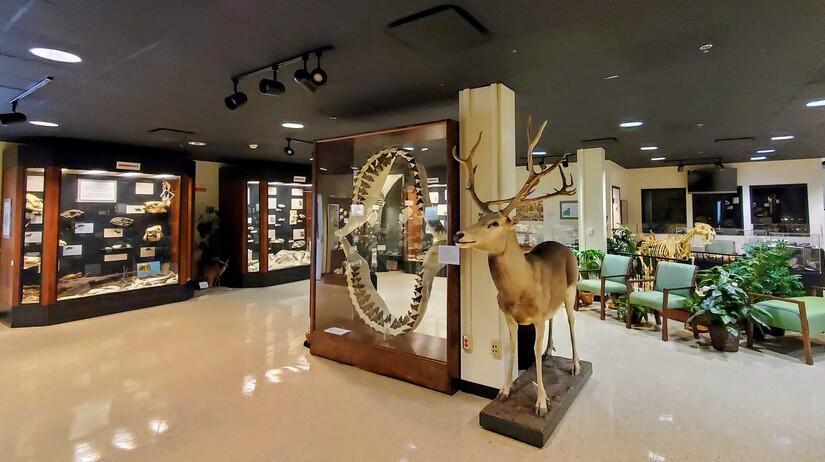Image

EDITOR’S NOTE: Corrected from original article posted last night
Very rarely, if ever, is a university's largest donor also one of its professors.
It seems counterintuitive. No one becomes a teacher in order to become a millionaire. That's what makes Kenneth Saladin's story so notable and interesting.
Saladin, who is the distinguished professor emeritus of biology at GCSU, first began teaching at the college in 1977. The new science building at Georgia College & State University recently was renamed the Dr. Kenneth S. Saladin Integrated Science Complex.
The new building, which first opened in 2021, shines. "A wall of windows wraps around laboratories on each floor, allowing people to walk the hallway perimeters and peer in," according to the university...


PHOTO CREDITS: Anna Leavitt // Georgia College & State University
Saladin was all smiles at the ceremony, which was attended by roughly 150 people, including his grandson, who was his sidekick at the event.
"An honor of such a magnitude gives me paradoxical feelings of pride and humility, and that's a tricky emotional balancing act,” Saladin said. "I've been walking on air (ever since finding out the news in February). I've found myself, not exaggerating, waking up with a smile before I even opened my eyes."



So, how does a humble science professor become a multi-millionaire? He writes one of the best-selling college textbooks ever, basically. No other textbook in McGraw Hill's vast catalog has sold more copies than Anatomy & Physiology: The Unity of Form and Function, which was first released in 1997. If you're a medical doctor in the United States who's under the age of 50, there's a very good chance that you've read Saladin's book.

Royalties from the textbook began rolling in a long time ago, but Saladin didn't retire until 2017, well after he could have. Saladin continues to keep a close eye on his baby – the Department of Biological and Environmental Sciences at GCSU. When Saladin taught his first class back in 1977, there were seven faculty members in the department. Now, there are 30-something.
There's even a pre-med track at GCSU now, which is something that Saladin started back in 2007. Thanks to another generous gift from Saladin, this one in the form of a $1 million endowment, the pre-med program will continue long after he is gone. "Thus far, 100% of the students who went through the mentoring program and decided to go to medical school have gained admission to medical school," according to the university.
Another one of Saladin's "generous gifts" helped pave the way for the William P. Wall Museum of Natural History, a sparkling 2,500-square-foot museum at GCSU that's become a mainstay for field trips for young students in Baldwin County and this part of Georgia.


Saladin's philanthropy to the university actually dates back more than 40 years, albeit in much smaller increments. Saladin "began early in his teaching career by donating small monthly payroll deductions to the biology department," back when the biology department was much more modest, and everything operated out of the very humble Herty Hall.
“We had some needs in biology that couldn't be covered by the state budget,” he said. “I just kicked in a little money to help fund the department that we could draw from things that mainly were laboratory oriented and funding for student travel to research conferences.”
Very rarely is a university's largest donor also one of its professors. Then again, however, very rarely has a professor cared so deeply for his department.

